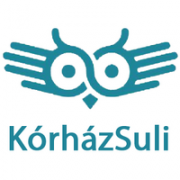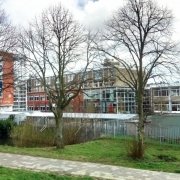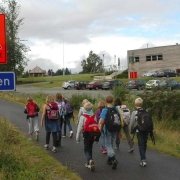Individualised teacher approach for inclusion
Excerpt
Ila Primary School, together with the University of Stavanger, has developed and implemented a personalised approach to teaching. It helps them to build a real community in and around the school that also acts as a welcoming school for newly arrived migrants. Their programme builds a strong basis for resilience, high level soft skills and, as a result, future school success.
Narrative, origins and objectives of the initiative
What kind of project is this? Please give a short description (summary) of it.
Ila Skole, a municipal primary school in the centre of Trondheim, has implemented a personalised approach to teaching for nearly a decade. It started off as a research and professional development project financed first by the local municipality, and then by the state, before becoming a self-sustaining approach to teaching. The programme puts the teacher in the focus for inclusion. The basis of their inclusion practice is the quality of relationship between each individual student and an adult (teacher), while it is the adult who is responsible for quality. Their aim is to exercise an authoritative approach in their relation to children in the school.
Please tell us why, in general, this project is considered a successful one?
For them the best indicator for success is the well-being of children. They regularly survey students as well as parents and they have experienced a sharp increase in contentedness since initiating the programme. Their work is also endorsed externally by regular visitors from the city and other areas, and they have also received the Queen Sonja Award for Schools.
And why would you consider it a grass-roots initiative?
Their programme started off as a complex project implemented in a number of school in Trondheim, initiated by the University of Stavanger and financed by the local municipality. The continuation was an own project proposal of the school and the university to widen those elements of the original programme that has proven to be most successful.
What challenges needed to be solved in this project?
There were no major challenges. Probably the most challenging part of implementation was to change teacher mindsets, but even that is relatively easy in the Norwegian context as compared to other countries.
Is this initiative based on any particular theoretical framework? Which one?
The approach to adult-child relation is based on the Baumrind categorisation of educator styles, defining the authoritative style as the most beneficial for children, and implementing it in daily school practices. This approach is reasonable and nurturing, setting high and clear expectations, involving children in setting them. Children experiencing this as an educator or parenting style tend to be self-disciplined and independent. In this approach disciplinary rules are clear and the reasons behind them are explained. Communication is frequent and appropriate to the child’s level of understanding.
(Appendix) Is your intervention standing on its own or is it a part of a bigger and more holistic approach?
The programme operates within a highly inclusive school system. It is combined with a psycho-social approach that aims to understand children’s behaviour and respond to it. It puts a large emphasis on finding reasons behind and properly reacting on mental health symptoms such as loneliness, aggression, or being an introvert.
Please describe the group(s) intended as beneficiaries of this initiative
Why has this group (have these groups) been chosen?
The programme is based on the belief and research evidence that supports the direct link between trained teachers for an individualised approach to teaching and better learning outcomes. The initial project was a reaction to realities of local schools making efforts to be as inclusive as possible.
Could you please tell us something about the relative size of the (of each) target group, within the school/university population, region and/or country?
Trondheim is a medium-size city of Norway with about 200.000 inhabitants. There are 57 schools in the area. There is a growing migrant population with a high number of new arrivals. This asked for a programme necessary to provide for the learning of Norwegian and mother tongue provisions. Being a welcoming school, Ila Skole had a 25% newly arrived migrant student population, plus another 10% of the regular school students also coming from migrant backgrounds. To fully implement the programme the school employs 15 teachers with a mother tongue other than Norwegian.
Which social characteristics are taken into account and what is the geographical area covered?
It is a middle class area in the centre of Trondheim where schools are easy to reach for students. They do not have an outstanding social problem or an extremely high number of children who need educational support. This means that including all students – an approach fully supported by the municipality – is a model of local community.
On which level is the project implemented?
School level
Please describe the political and socio-economic factors that you believe have been important enablers for your initiative
Did the initiative have political support?
Norway implements a fully inclusive approach to education. Their support was also evident from them financing a 5-year programme in the school. Local politics is also committed to inclusion in education, being the financiers of the first 2-year project, endorsing and promoting the work done by the school as well.
How did it fit with local, regional or national policies?
Their teacher training programme was a reaction to the necessity of improving school provisions for inclusion policies at all levels.
Who are the stakeholders supporting the initiative?
Apart from committed school leadership the most important stakeholders are the teachers who need to be committed to the individualised approach, training themselves and cooperating with each other as a team. They also need the cooperation of parents, considered to know their children best. Students are also important stakeholders, being fully recognised partners in their own learning. Local municipality support is also important; it was crucial in the first phase.
Are there particular demographic changes present that are influencing the project?
The reality of a high percentage of newly arrived migrants in the area, and them being appointed as a welcoming school for these migrants.
What is the institutional strategy and culture of the (educational) organization?
The basis is provided by the individualised approach to each individual student, a strong focus on well-being, not only traditional academic outcomes, and a strong cooperation among the teachers.
To what extent does the initiative have an influence on institutional policy (or potential influence) of the (educational) organization?
This programme is now in the DNA of the school, not seen as a project anymore. It changed the institutional policy to one focusing on the individual, putting equal emphasis on soft skills and well-being. Teachers’ work on getting to know and supporting their individual students, to be kind and responsive is acknowledged as an important part of their daily work.
(Appendix) Is there public support for your initiative and the issue it addresses?
Parental satisfaction with the school’s approach and results are a clear sign of public support. The local municipality has also acknowledged their work, and their professional as well as community visitors do so too. The Queen Sonja Award offered a wider recognition and media coverage.
(Appendix) What other factors do you think have been important for the success of this initiative?
Initial teacher training, the general approach of professional educators and national inclusion requirements were certainly supporting success. There has also been more and more general focus on mental health and well-being in Norway.
Please describe the overall initiative design and the methods and tools used to reach the goals
Please describe the specific activities carried out.
In the project phase the programme was an in-service training programme provided on the basis of collaboration between the school and the University of Stavanger. While the university was providing in-service training on a high level, in the school, with a strong evidence-base, the school’s professionals have also been involved in the initial phase training activities of the school. Teachers were given time for training, and their working hours acknowledge the effort they put into individual approach to students, although it is sometimes felt as a major extra workload.
Teachers are supported and encouraged to collaborate with each other, with teaching teams offering a holistic approach to the learning of each child.
A certain teacher is assigned the special role of training and supporting new teachers in blending in the school.
Students are regularly observed, supported and also surveyed to ensure the best possible outcome.
What were the key roles (teacher, student, management team etc.) within the project?
Management: offering the framework for individualised inclusion approach, providing training, peer learning and professional support
Students: take ownership of their own learning, collaborating with the teachers
Teachers: their personal development, collaborative and individualised approach, inclusive mindset and willingness to train and be trained are key to the programme.
What ideas, tools, theories, models, methodology (etc.) have been used to reach the goals?
The school has developed and implemented their own frameworks for
- class leadership,
- inclusion and diversity, and
- collaboration with the home
What are the final revenues of the project?
Increased student well-being and higher level soft skills play a crucial role in educational success at later stages of education as well as in the education careers of students in welcoming classes (about 25% of the school population) who switch to the school nearest to their home after spending a year in Ila Skole. The collaborative methodology learned and implemented by the teaching staff leads to higher teacher satisfaction and increased well-being.
Please describe if your project ensured its sustainability
If so, how did you ensure the short-term impact of the project?
The short-term impact was ensured by the professional collaboration between the school and the university by providing training and support in the project phase. Since it became a regular school programme, short-term impact is ensured by the initial training and later peer support of new staff.
And how did you ensure the long-term impact of the project?
It has become the core of the school in the past nearly 10 years, the key to long-term sustainability. The basis of long-term impact is a school management that recruits suitable staff and ensures teachers collaboration.
Has your project been replicated elsewhere?
Some other schools from the original 2-year municipal project implement similar approaches in different forms.
Please tell us about the resources used in this initiative
What was the budget for the initiative?
The 5-year national project of the school and Stavanger University had a nearly 1 million NOK government support.
How much did the initiative depend on volunteers?
It did not.
How were the costs perceived by the public/the sector/other stakeholders?
The programme’s success and becoming self-sustaining without further funding made it acknowledged and received well.
To what extent did the initiative achieve its objectives?
Please describe the evidence to support the success of your initiative.
Good school results in national tests and later stages of schooling
Decreasing behavioural or mental health problems
Recognition by local communities as well as other schools
Queen Sonja Award
Did the intervention lead to any unintended (positive) outcomes?
More effective and satisfying teaching experience through collaboration was such an outcome. Increasing school attendance is another one, as a result on focusing problems rooted in mental health or psychological challenges.
What indicators (quantitative and qualitative) have you measured to demonstrate success?
- national test results
- feedback from secondary school students
(Appendix) How did you evaluate/monitor this intervention?
Overarching monitoring of the programme is the continuous feedback on student achievement and well-being, but the whole programme is based on individual treatment of each student that includes monitoring and evaluation. This is part of the continuous collaborative work of teaching teams.






